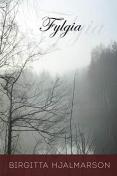BKMT READING GUIDES
Fylgia
by Birgitta Hjalmarson
Paperback : 232 pages
0 club reading this now
0 members have read this book
Introduction
Hidden in the forest of Sweden, a country church gleams in the sun. The First World War rages on the continent. Anna, in the front pew, refuses to accept the age-old beliefs the village hands her. Sixty years later, she gives refuge to a young niece, whose marriage is falling apart. Fredrik, Anna’s lover, is long since dead. She still blames him for the death of their child, yet she misses his scent that would linger on her skin, like the moon that shone on the snow and colored it blue. Every day she visits the child’s grave, an old woman in a beret and tweed jacket. Time after time her thoughts return to the past.
Excerpt
Chapter One ExcerptI STILL GO to the grave. My younger self runs ahead. I follow, cutting through the forest and staying away from the country road. An old woman in a beret and a tweed jacket.
Anemones cover the graveyard in the spring. Songbirds nest in the church ruin and the bird-cherry tree smells of bitter almonds. By midsummer the dog rose blooms. Dry branches crack in the meadow below, as the brown cows seek shade under the old apple trees. ...
Discussion Questions
1. A fylgia, Gustafa explains, is a “shape” that will follow Anna around, a guardian spirit of sorts. It may appear as an animal or even as a person, only to disappear shortly before her death. When does Anna see it?2. Dancing occurs often in Fylgia. What does it signify?
3. When talking to Ella, Anna says, “I was taught early that what was good for the family and the village was also good for me. Feelings would only confuse.” In what way did this lesson help or harm her?
4. Anna sees a dead wood grouse and suspects it died from fox poison. “The hen lay on her back, with a dead viper wrapped around her wings. Three wood rats had bitten into her breast. Even in death they had refused to let go.” In what sense might this be a metaphor for the novel as a whole?
5. Anna tries to explain to Fredrik why the children bully Ella. “It’s as if by punishing her, they think the rest of them can be saved.” Is this kind of fear at the heart of bullying even today? If not, how do you explain it?
6. The threat of disease, even madness, is one of the undercurrents of Fylgia. How would Ulrika have been diagnosed today? Could she have been cured?
7. Anna reads Nietzsche, who says that God is dead. She disobeys Wikander, who says the word of God is set in stone. Yet, when she listens to Palestrina, she’s deeply moved. “Anyone needing proof of God should only hear such music.” Is she a believer after all? What is her worldview at the end?
8. After Gustafa breaks Ulrika’s vase, Torpen takes it to be mended. It’s “expertly repaired, with not the faintest trace of breakage.” Anna recalls: “Even so, we never dared fill it with flowers, only a single peony on some special occasion, for it could never be as strong as it once had been.” How does this apply to other aspects of her life as well?
9. In Chapter Thirty-Eight, when Anna goes back to the cabin, Fredrik has already left. She will always wonder what might have happened had he still been there. What do you think?
10. Anna wants to show the villagers how to use condoms, even though they are illegal. Emma objects: “I don’t believe in forcing information on people who don’t want it.” Do you think Emma is right?
Weblinks
| » |
Author's web site
|
| » |
Follow the author on Twitter
|
| » |
Follow the author on Facebook
|
| » |
Publisher's book info
|
Book Club Recommendations
Recommended to book clubs by 0 of 0 members.
Book Club HQ to over 90,000+ book clubs and ready to welcome yours.
Get free weekly updates on top club picks, book giveaways, author events and more








